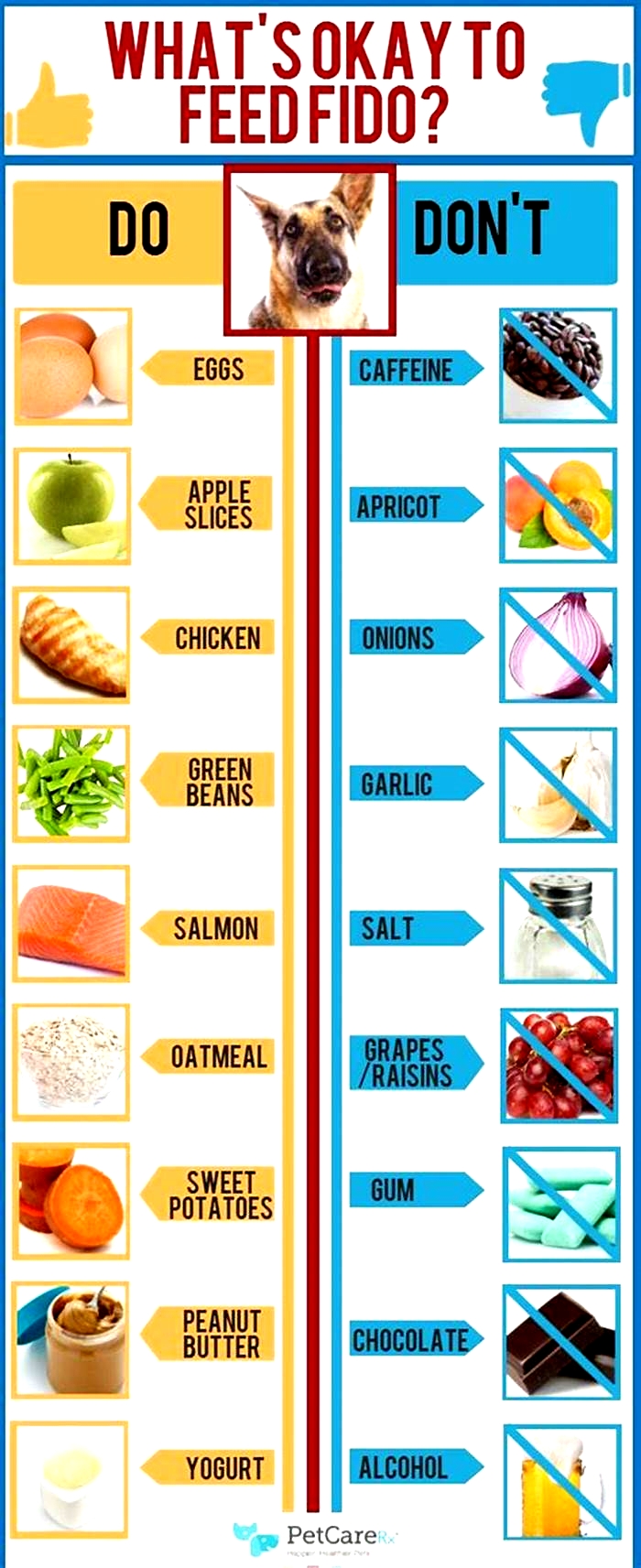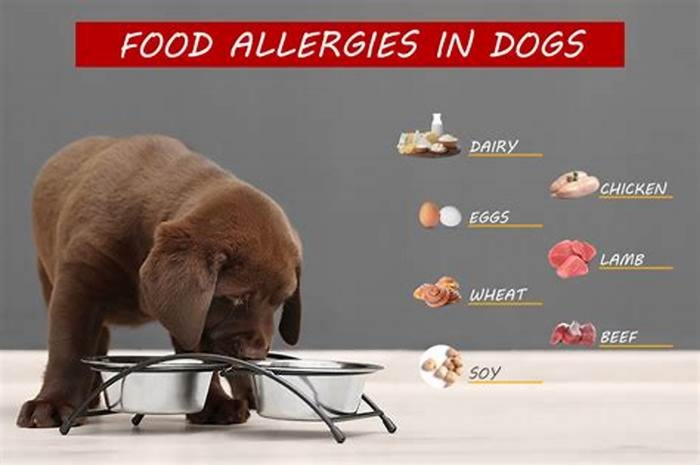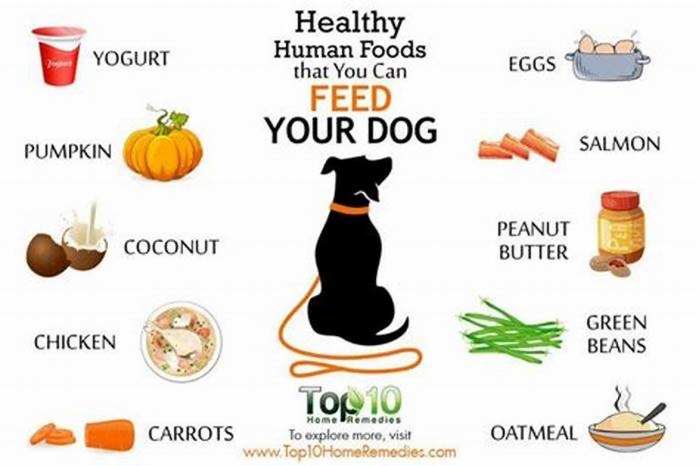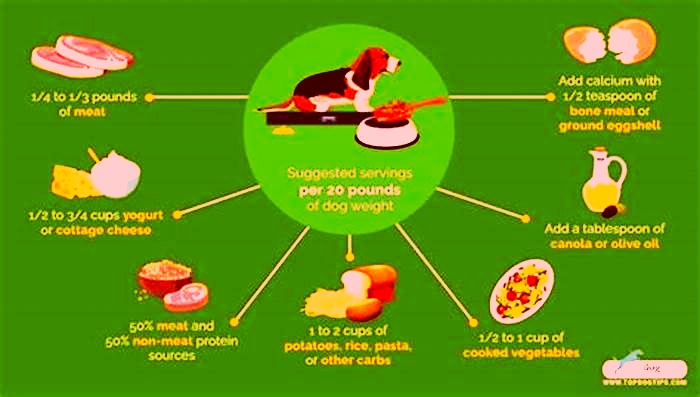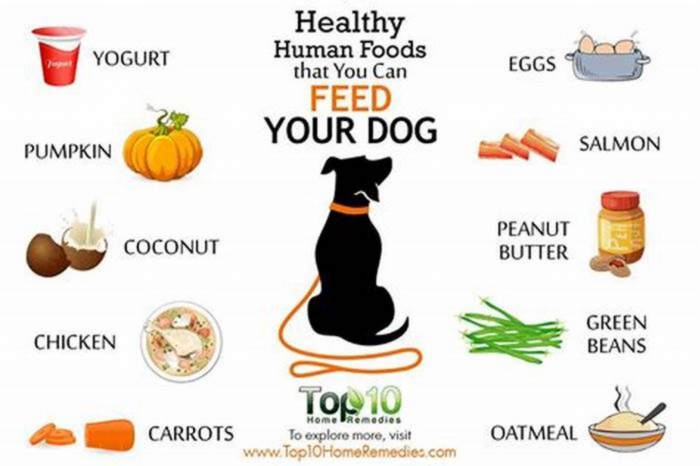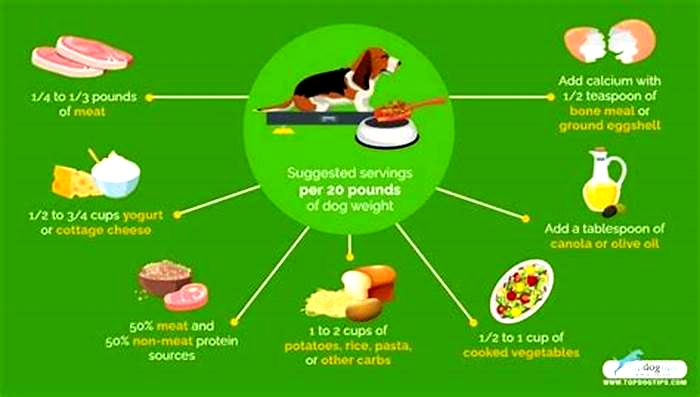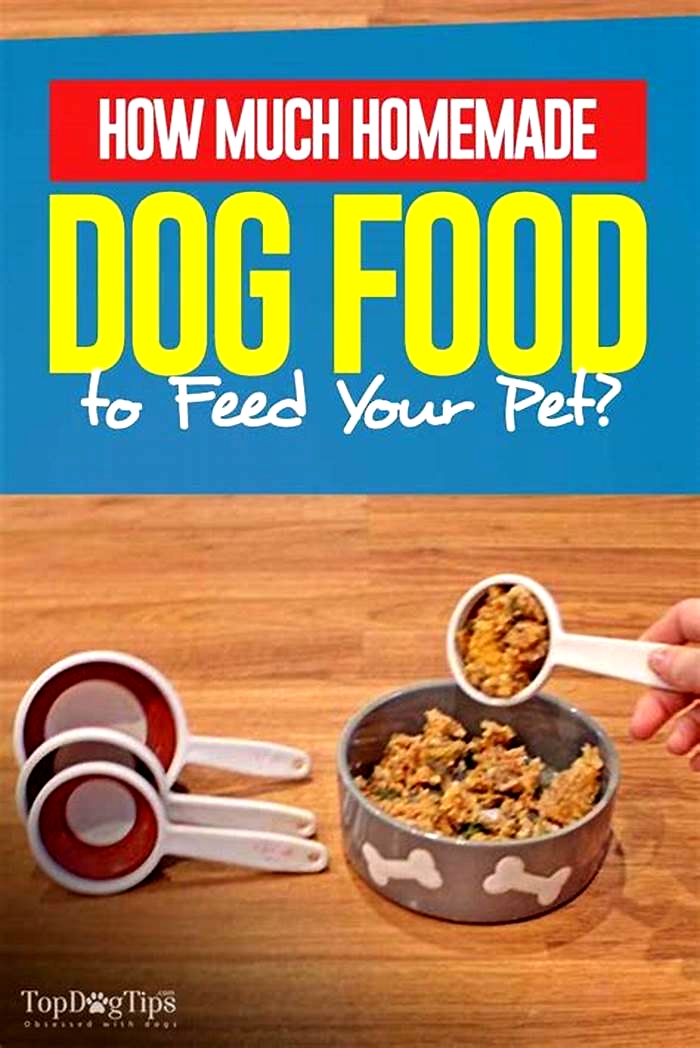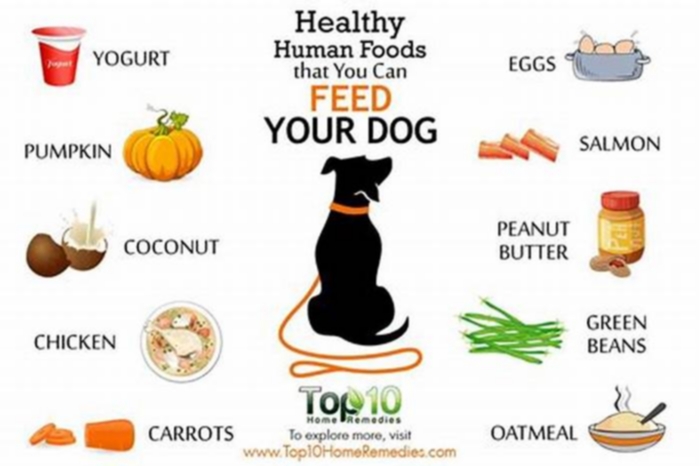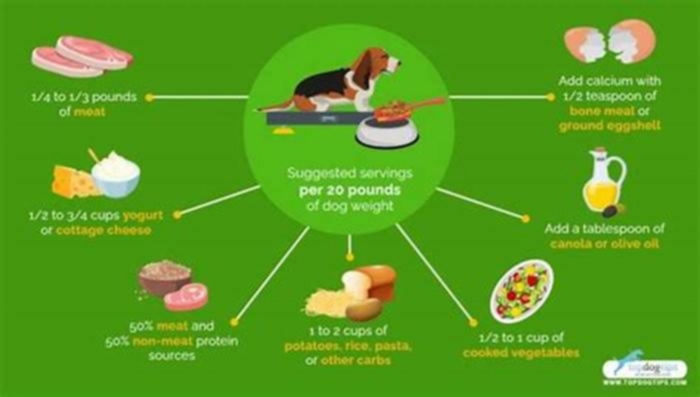how to know how much homemade dog food to feed
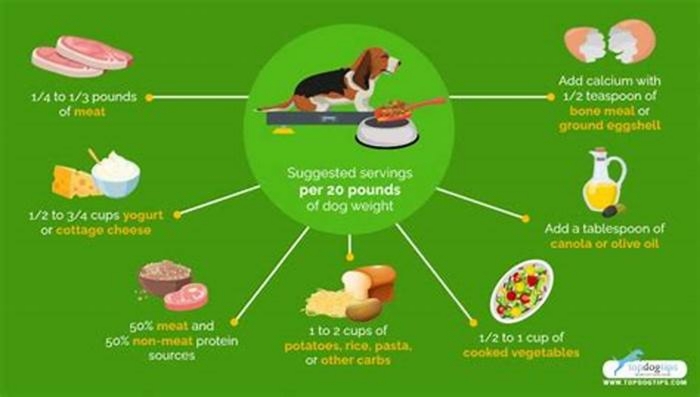
How Much Homemade Dog Food to Feed Your Dog
Are you planning to switch from kibble to homemade dog food? Well, you might be asking how much homemade dog food to feed your dog.
Your dog's nutrition is very important in maintaining its healthy body. So, feeding a dog a homemade diet is a great alternative to commercial kibble if you do it right.
Before we dive in, I wanted to ask you, are you currently feeding your dog commercial dog food?
Is your dog having skin problems, ear infections, lack of energy, or stomach problems?
Or maybe they aren't that old and have other health complications already. Some breeds are more susceptible to health issues, which could be another reason.
It could be their diet. In fact, it most of the time is their diet.
Well, commercial dry dog food is the equivalent of fast food. It's mostly cheap, accessible, ultra-processed food.
I know we all get some fast food occasionally, and I am guilty of it. But imagine if you ate that every day.
You would start to feel awful.
And unfortunately, our dogs can't speak, so they always seem to be fine and enjoy their food.
They eat it because commercial dog food companies add flavoring and dye back once the kibble has been processed to make it more interesting and enticing for your dog.
Making homemade dog food might not be hard for you because you can easily find sources on how to do it.
But then comes the conundrum we all deal with, how much homemade dog food should I feed my dog?
Well, it's not an easy question to answer.
So in this article, I'll try to explain how you can figure out the proper homemade dog food serving size in cups for your dog.
Below, I'll also discuss the factors that affect your dog's diet and the importance of a balanced homemade meal.
How Much Homemade Dog Should I Feed My Dog?

Note: Before you spend time figuring out how much homemade dog food to feed your dog, understand that the only person who can give you an accurate answer to this question is trained in canine nutrition a veterinarian or a canine nutritionist.
And even then, an expert may not be able to give you an exact answer; together, you will have to find recipes and exact serving sizes to meet individual dogs' specific needs.
Homemade Dog Food Serving Size in Cups
To start use this general guideline if you are like me wondering:
How much homemade food should I feed my dog by weight?
Great question.
To prep your dog's homemade diet, you'll need a set of measuring cups.
Somethinglike this is what I use.
For most of my homemade dog food recipes, I typically include serving sizes in the article.
I generally recommend feeding the below amount:
1/2-3/4 of a cup of food for every 25 pounds of body weight
While this doesn't seem like a lot, you must remember that a well-balanced homemade meal is much more nutrient-dense than most commercial diets.
Ideally, you use high-quality, whole-food ingredients rich in protein, moderate fat, carbohydrates, and vitamins when making homemade dog food.
On the other hand, commercial dog food brands are processed and contain fillers that are only added to the recipe to make your pet feel like they've had enough to eat.
Thankfully, homemade dog food does not include these types of ingredients (which is why you're making the switch in the first place).
This type of feeding is also better for your dog's digestive tract and digestion and will reduce the amount of stool a dog creates.
It's a win for you and the dog.
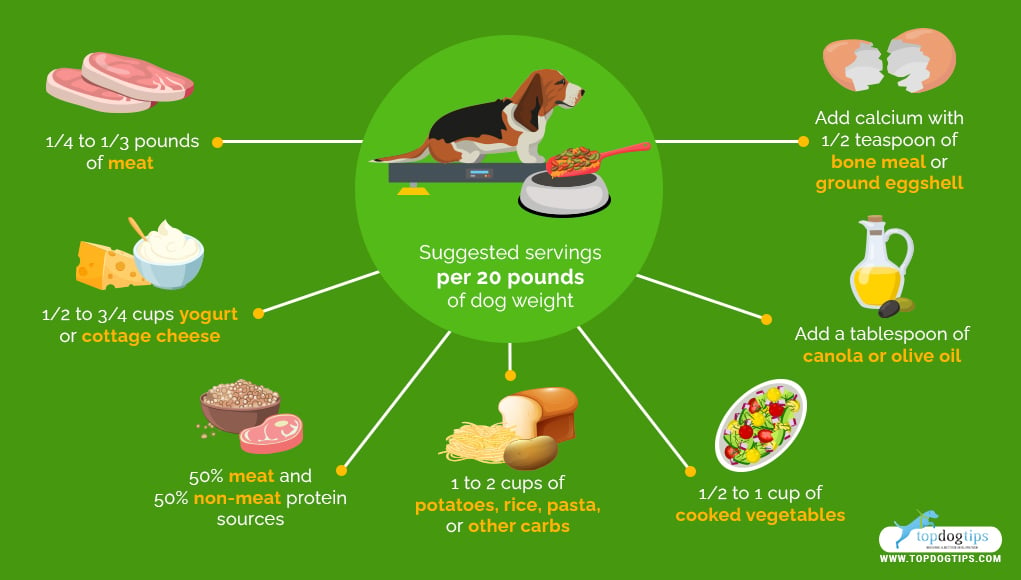
Homemade Dog Food Serving Size in Cups by Ingredient
You can also figure out how much homemade dog food to feed your dog by looking at the ideal quantities for each type of ingredient.
Use the following as general guidelines.
Note that all the suggestions are per 20 pounds of your dogs body weight and are the amount needed daily.
- Give your dog 1/4 to 1/3 pounds of meat for every 20 pounds.
- Give your dog 1/2 to 3/4 cups yogurt or cottage cheese or 3 to 4 eggs every 20 pounds.
- If you use meat and non-meat protein sources, half each of the above.
- Give your dog 1 to 2 cups of potatoes, rice, pasta, or other carbs per 20 pounds.
- Give your dog 1/2 cup to a cup of cooked vegetables for every 20 pounds.
- Add a tablespoon of canola or olive oil for every 20 pounds.
- Add calcium with 1/2 teaspoon of bone meal or ground eggshell per 20 pounds.
Factors That Affect a Dog's Diet
When you decide to start cooking for your dog and delve into a homemade dog food diet, you'll have to do some reading and learning.
You need to fully understand the nutrients that a dog's body requires before you get to figuring out how much food to feed a dog.
Read this article to understand your exact nutritional needs, which will help you figure out serving sizes and how much homemade food to feed a dog would be more beneficial.
A dog's nutritional requirements can be figured out using calculations from the National Research Council (PDF), and they will be based on several factors:
- age
- breed
- environment
- activity level
- medical history
- current health condition
The type of homemade dog food diet you choose to feed a dog will also greatly impact the answer to this question, How much homemade dog food to feed my dog? Not all dog food recipes are created equally.
All of them will offer different nutrients. Some will be well-balanced and can be used as a staple in a pet's diet, while others may only be good as an occasional meal.

Why You Need to Know the Exact Serving Size of Food
You may be wondering why you even need to figure out the right homemade dog food serving size in cups for your pet. Some pet owners assume they can watch a dog's weight and ensure they're not gaining or losing.
This doesn't seem right.
The consequences of feeding a dog too much or too little food are obvious.
When overfeeding on calories, your dog will become obese, which could lead to several other health conditions: diabetes, joint problems, certain types of cancer, and heart and respiratory issues.
Feeding a dog too much food can also lead to vitamin toxicity. In such cases, too much of a good thing could be very bad.
For example, some of the most common vitamin toxicity cases are related to Vitamin A, which can cause bone spurs, lethargy, constipation, stiffness, and limping in dogs, and Vitamin D, which can lead to vomiting blood, seizures, muscle tremors, and abdominal pain in dogs.
At the same time, if you're not feeding your dogs enough essential nutrients, they'll be at risk of nutrient deficiency and becoming malnourished.
When you haven't figured out the exact serving size of homemade dog food and do not realize a dog isn't getting all the essential nutrients, it will become weak, and its organs will start failing.
In the end, nutrient deficiency will lead to death if it's not corrected in time.

The Importance of Balanced Homemade Recipes
Not all homemade dog food recipes will provide all of the nutrients that your dog needs, which is exactly what you need to work with an expert to figure out your individual dog's specific nutritional needs and how best to meet those needs.
In a recent study, researchers tested 200 homemade dog food recipes, many of which were written by veterinarians.
They found that only 9 of them provided all the essential nutrients in the right concentrations to meet the minimum standards set for dogs by the Association of American Feed Control Officials (AAFCO).
Only 5 of the recipes provided the essential nutrients in the right concentrations to meet the National Research Councils (NRC) minimum requirements for adult dogs.
This doesn't mean that recipes are bad most of them can hardly reach those nutritional needs without adding too many calories.
It means you must add supplements to your homemade dog food meals to balance them.
You will choose some of those specifically for a dog's breed or health condition.
For example, if your pet is predisposed to hip and joint issues, you may need to include a joint supplement.
The most common supplements recommended to add to homemade dog food recipes include multivitamin supplements, hip, and joint supplements, omega-3 fatty acids (fish oil), Vitamin A & E, calcium, and extra protein supplements.
These will vary depending on your dog's condition. Some general multivitamins and fish oils will be good for all dogs, but you still need to consult your vet about this.
Some good examples include the below:

Other Tips for Making Homemade Dog Food
In deciding how much homemade food to feed your dog and how to make your dogs food yourself, keep the following advice in mind:
- Pay attention to nutritional requirements. Dont just assume that eating your dog wholesome foods will meet his needs.
- You dont have to ensure every single meal is fully balanced. Just make sure your dogs diet is balanced over time.
- Give your dog more than just a little bit of yogurt to meet calcium requirements.
- Your dogs nutritional needs are very different than those of humans.
- Your dogs nutritional needs vary based on lifestyle, age, and more.
- Dont go overboard with the vegetables. Pay attention to proportions.
- Dogs need carbs, and grains arent always bad for them.
- Raw diets arent necessarily good or bad. Always do your research before starting one.
- Always change your dogs diet gradually to prevent digestive discomfort.
All of this shouldn't discourage you from making homemade dog food, but hopefully, it shows you you will need to put in a little more work (at least in the beginning stages) than simply pouring kibble into your pet's bowl.
To wrap this up: although I did give my recommendation for a serving size for most homemade food for dogs' diets in this article and my tips on how much homemade dog food to feed a dog, I cannot stress enough the importance of working with a veterinarian or canine nutritionist.
This is the only way to ensure you're feeding your pet an appropriate diet.
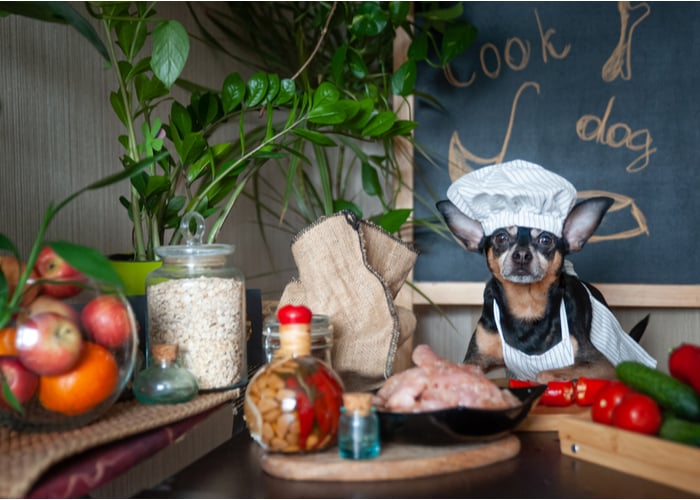
Furthermore, we have put together a course to teach our readers how to make and prepare homemade dog food!
Now you may be thinking,
Woah, what's the point? That sounds like a lot of effort.
They do fine on this brand!
My last dog lived till 15 on Hill's Science why would I switch.
Those are great points, but you would never know if they could have lived longer or had a healthier end to their life.
Well, no need to doubt because we have living proof.
In fact, we recently interviewed a woman who has been cooking food for their dog for 20+ years!
She has a mastiff that is 15 years old.
So that you know, the average lifespan of mastiffs is between 6-12 years.
She even said that all of her littermates have already passed on, and some of her littermates have also passed on.
The course will change your life and, most importantly, your dog's life.
Here's what you will get when you buy the Homemade Dog Food Mini-Course
- Lifetime access to the course
- Lifetime access to us and our well-known Youtuber, Samantha, where you can ask her any question you want about homemade dog food
- Your first recipe and supplement recommendations for starting your homemade dog food journey
- Your very own Batman Utility Belt for cooking for your dog
- Understanding why nutrition is important for your dog
- Learn the exact equation on how much homemade food to feed your dog
- Knowing exactly how many calories your dog needs to maintain and even lose weight
- The ideal rule of thumb for feeding your dog a balanced diet
- Worksheets that are yours to keep and print
And lastly, we feel so confident that you will benefit that we are going to throw in a 100% guarantee that if you are not satisfied with the product and customer service, we will refund you your money back.
Check Out Our Homemade Dog Food Mini-Course!
Common Mistakes When Cooking For Your Dog
You can make many mistakes when cooking food for your dog. It might be:
Not using trusted sources
You might be trying to find a more affordable food source, but be careful about it because you might find untrustworthy sources that could harm your dog.
Not preparing a balanced meal
A balanced meal is very important for your dog. So, making mistakes on it could lead to nutrient deficiency.
Relying On Multiple Diets To Create Balance
According to Dr. Larsen, multiple diets could cause the same deficiency in clinical studies.
Using Unsafe/Unhealthy Ingredients
In making homemade food for your dog, you should be more careful in choosing its ingredients.
Not Following Recipes
To make the best dog food, owners should follow the specific recipe guidelines in preparing it.
Understating the Impact of Dietary Changes
Monitoring your pet's health would greatly help to change their food into homemade recipes.
FAQs About How Much Homemade Dog Food To Feed My Dog
Is Homemade Dog Food Healthy?
Though feeding your dog homemade food is easy, homemade diets have no scientifically-supported benefits. However, it can be a better diet in the long term.
Commercial foods, such as dry foods, have complete nutrition in them. But your dogs might not be excited about seeing and eating it daily. So, feeding them different kinds of food would make sense.
Aside from your dog would surely enjoy your homemade food for them, they could also get many benefits from it.
What are the benefits of homemade dog food?
Foods benefit every living creature, thus, your beloved pup. So, here are some potential benefits of feeding your dog food made at home.
- Regulation of Pet Food Quality
- No Filler Ingredients in Homemade Foods
- Increased Variety in the Diet
- Homemade Diet May Provide Better Nutrition
- Homemade Dog Foods Are Fresh, Not Preserved
- No More Waste (Or Less of It)
- It Can Be Cheaper (Sometimes)
You can also check on our website the other pros and cons of feeding homemade food to dogs.
How Much Food Should I Feed My Dog Chart?
The above chart shows how much food your dog needs to be based on weight. It depends on activity level, age, and size.
For example, an adult active dog that weighs 30 pounds needs about 922 calories of food.
What do dogs need in homemade food?
Knowing how much homemade food to feed your dog depends largely on what you feed him.
Stick to high-quality ingredients, such as high-quality proteins, carbohydrates like vegetables or grains, calcium, essential fatty acids, and fats like meat or oil.
Is Making Homemade Dog Food Better for Your Dog?
No scientific research shows that it is better or worse for your dog to eat homemade food.
The main benefit is that it gives you complete control of your pooch's eats, helping you keep him healthy and happy.
Can I feed my dog only homemade food?
Of course, it's always your choice if you feed them homemade or would you prefer to them process foods over the counter.
The only important thing is that your dog could have balanced and healthy food to maintain its healthy lifestyle.
It depends on the quality and how much homemade dog food serving size in cups you make for them.
Can I Feed My Dog Chicken and Rice Every Day?
You can give your dog chicken and rice every day, but it is much healthier to include other ingredients as well.
You need to ensure that your dog gets enough nutrients, including vitamins and minerals.

How Much Homemade Dog Food to Feed Your Dog: Final Thoughts
You generally want to feed your dog about 2-3 percent of its body weight, assuming it is an adult. This means that if your dog is 50 pounds, you should feed him about 16 ounces.
Knowing how much homemade dog food to feed your dog not only give them full nutrition but also help them grow healthier. And it would help if you also looked at the nutritional information of the recipe you use.
If you are a beginner in adopting dogs, you must know the homemade dog food serving size in cups. However, consulting your vet is also important.
For other homemade dog food recipes, kindly visit our website.
READ NEXT:21Best Homemade Dog Food Books
Disclosure: Wemay earn affiliate commissions at no cost to you from the links on this page. This did notaffect our assessment of products.Read more hereand findfull disclosure here.
Want to share this?



